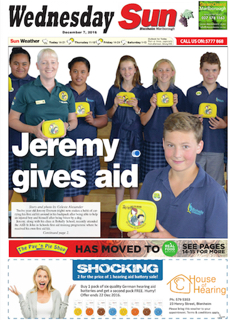VOXPOP GOES ROUND THE WORLD
July 13 2017 MediaPasifika blog

Vox Pop is a new but very specialised app, designed to encourage audience participation in radio, but as soon as you understand how it works you realise it could have applications in many fields. I found the story on Scoop and took it further.
Peter Fowler is radio reporter with a technical bent: he founded the newsroom.co.nz website in 1996, (as in NewsRoom, now deployed by top journos Tim Murphy and Mark Jennings in their agency of that name.)
He worked with ex-Google developer Andrew McMillan to put Vox Pop together, and while ‘going gangbusters’ might be a bit over the top, international interest is coming in and Fowler is off to the US in coming days for a trial with a public radio network, as front man in the three-way partnership with McMillan and RNZ.

Journalist and techo Peter Fowler
So what’s it about? – you may be wondering. The problem with public participation in radio or television programmes is that people have to call in, someone has to answer the call, the caller is put on hold, and may get tired of waiting before being asked to make their contribution.Messy, no?
With Vox Pop loaded on their smartphones callers login and choose to engage with one of a selection of programs or topics. In each case its producer would have posed questions to generate comment. RNZ trials here in Godzone are positive.
Back in January it was let loose for a week on the Jerry Mulligan show – lots of responses’ says Fowler which considering that you have to have the app to participate is pretty good.
Now they’re having a more serious run, with Jim Mora, on The Panel. Fowler says once the Vox Pop user clicks on to the program on his smartphone and decides to respond to a question it’s ready to record, upload to broadcast, or translate into digital for posting to the RNZ website or back again for broadcast.
Voice quality is exceptionally high, says Pete, even good enough for music.
There were 350 downloads in the first week representing an average 35 useable responses of between 15 and 30 seconds — a valuable addition to chatshow programming.
And it’s ‘skinnable’, so the American prospect will have no difficulty rebranding the app for local consumption.
How big’s the market? How about every radio station with a chatshow in the world? Maybe the Anglosphere will do to start!
Ends
David Reade, director Netmedia Ltd tel 04 475 8166 mob 027 4825036 www.mediapasifika.com trading MediaPasifika, Asianmediaonline, and MidiaBrasilonline. Linking with UK/Europe and North America with London-based PRMax. Member PRINZ, PRIA, LANZBC, BNZBA.
 THE NEW KID ON THE BLOCK
THE NEW KID ON THE BLOCK
 December 16 blog from MediaPasifika
December 16 blog from MediaPasifika